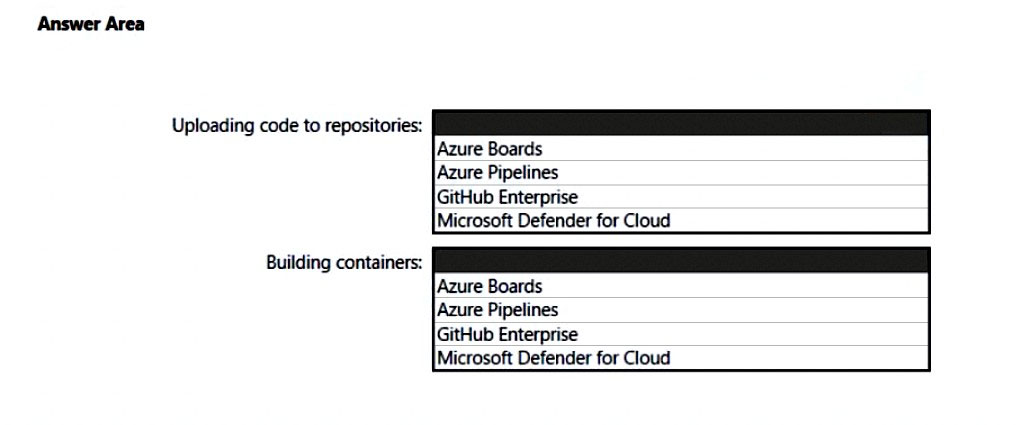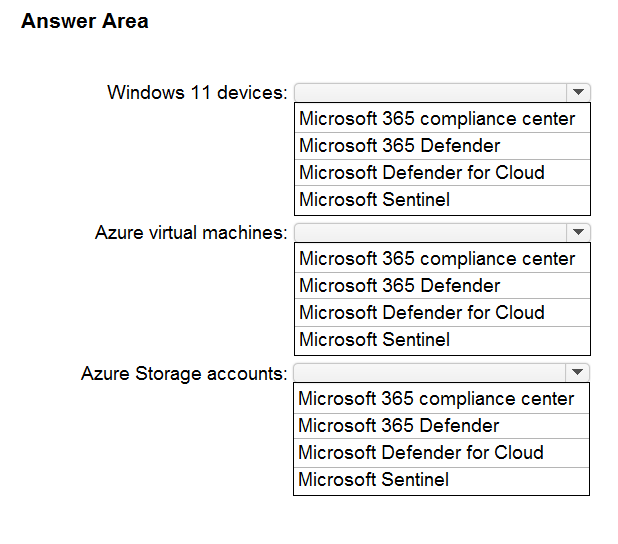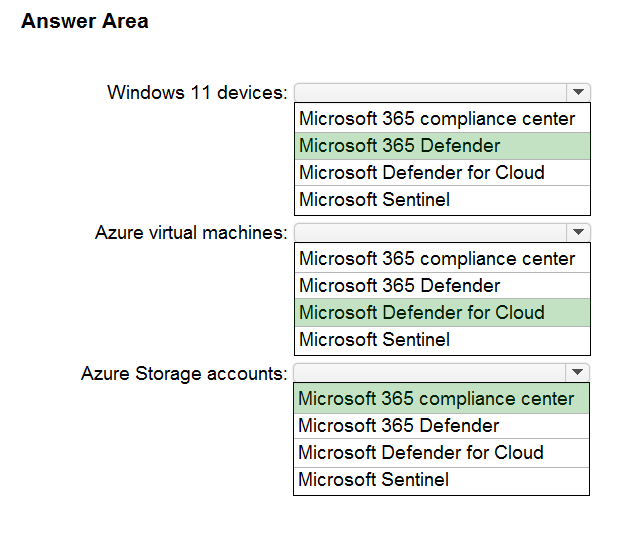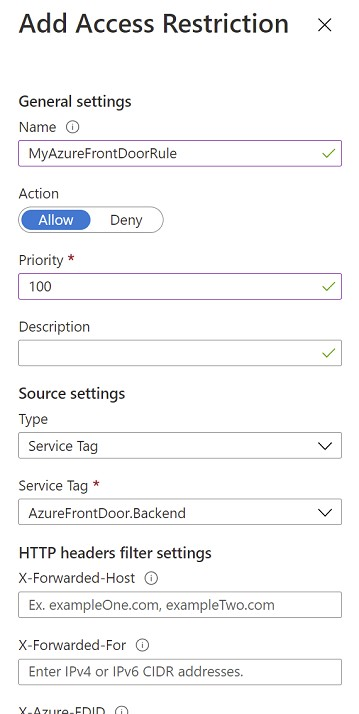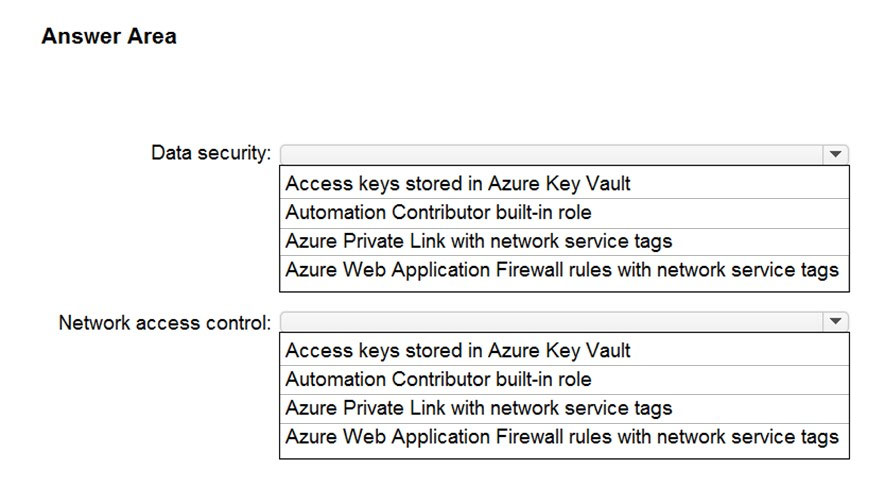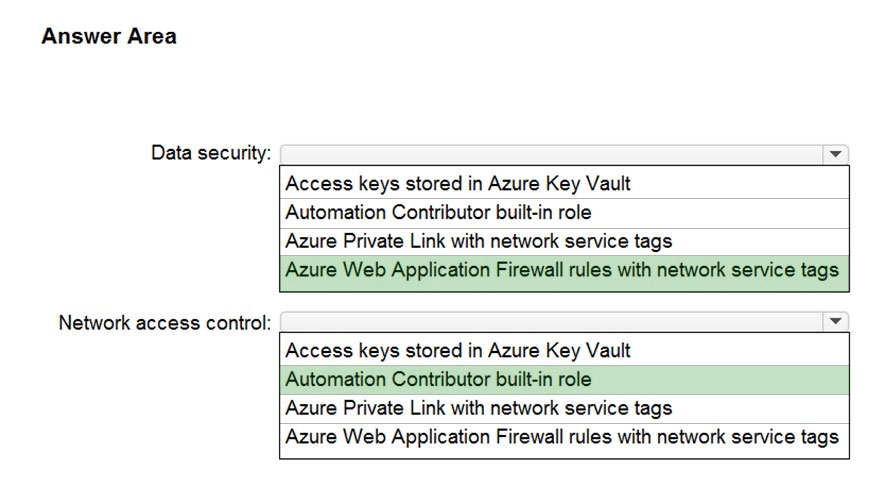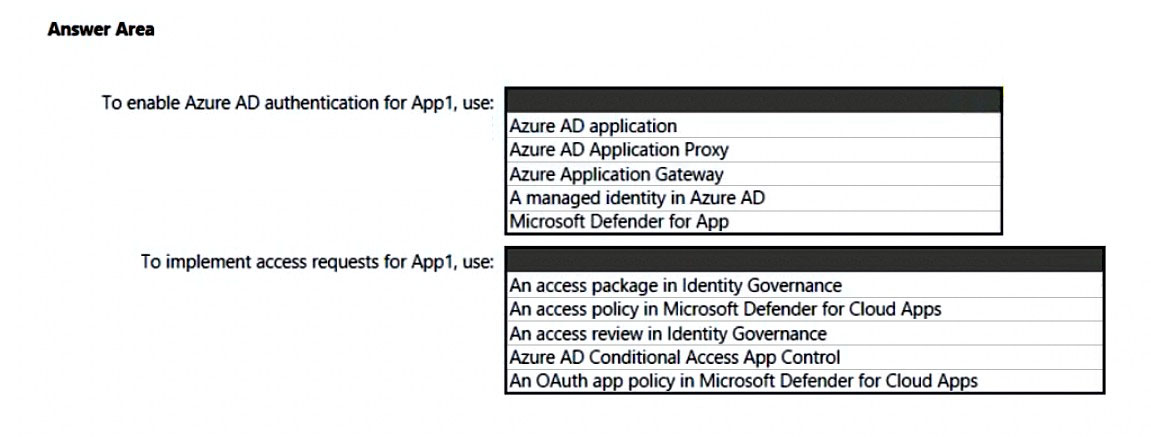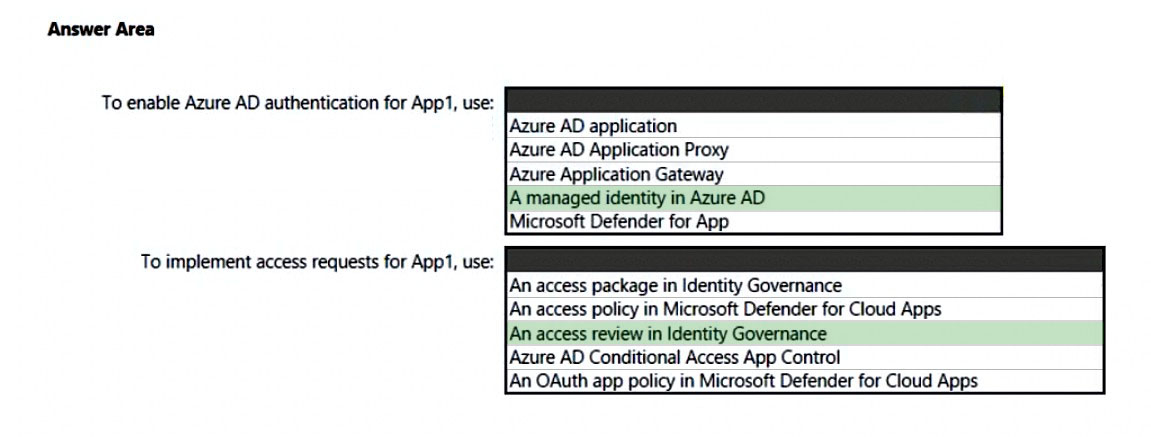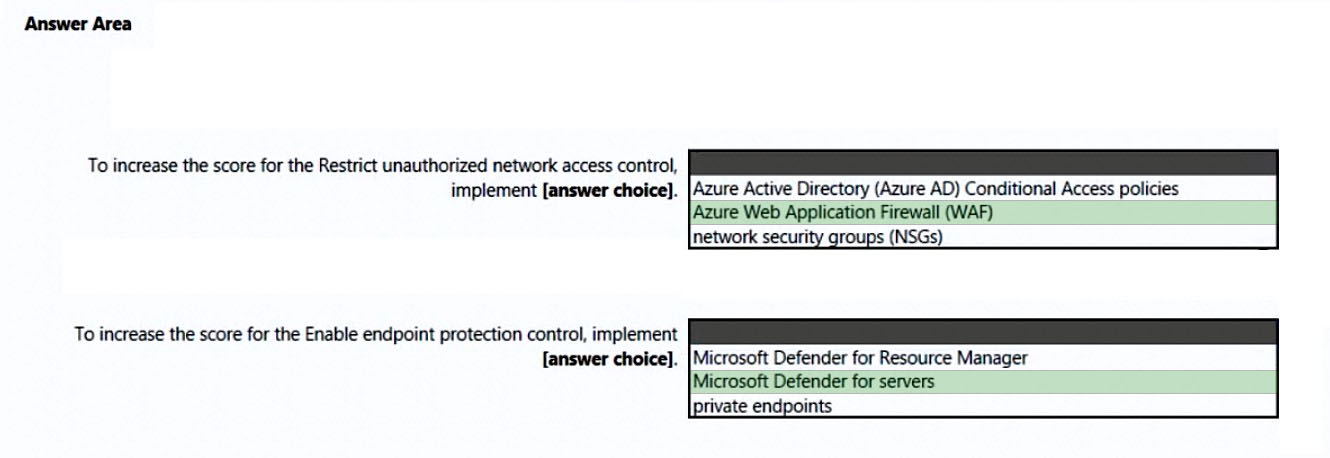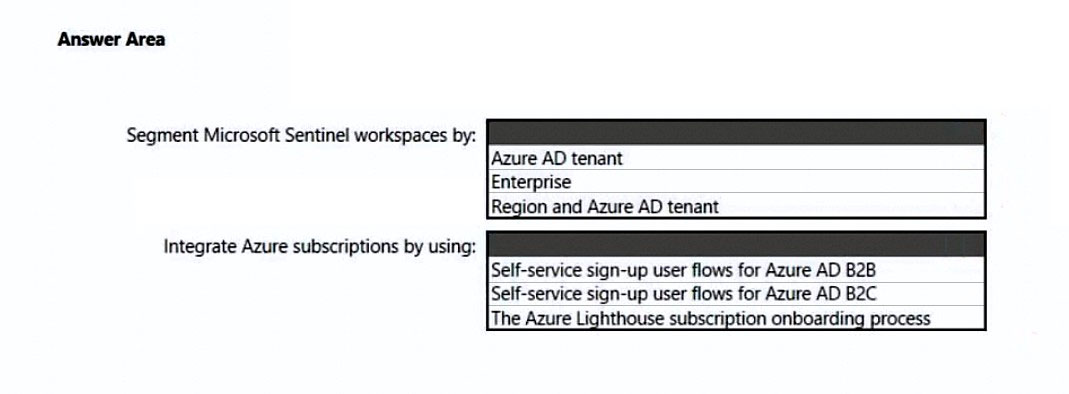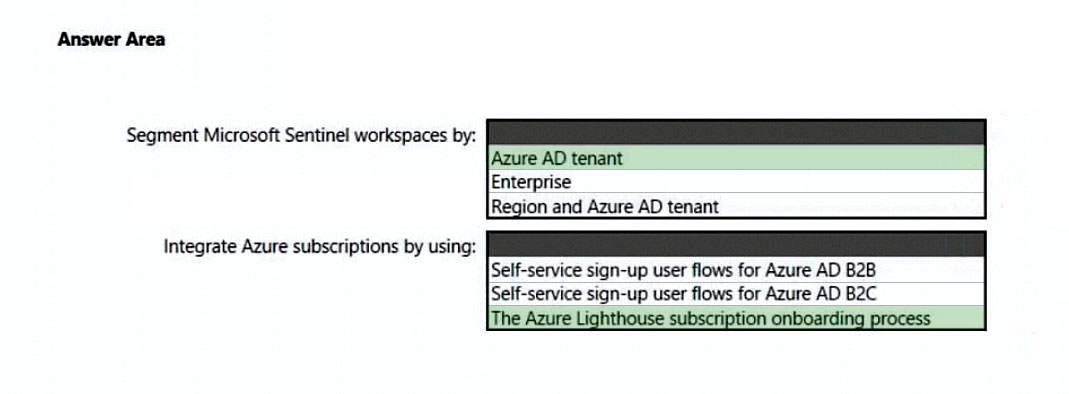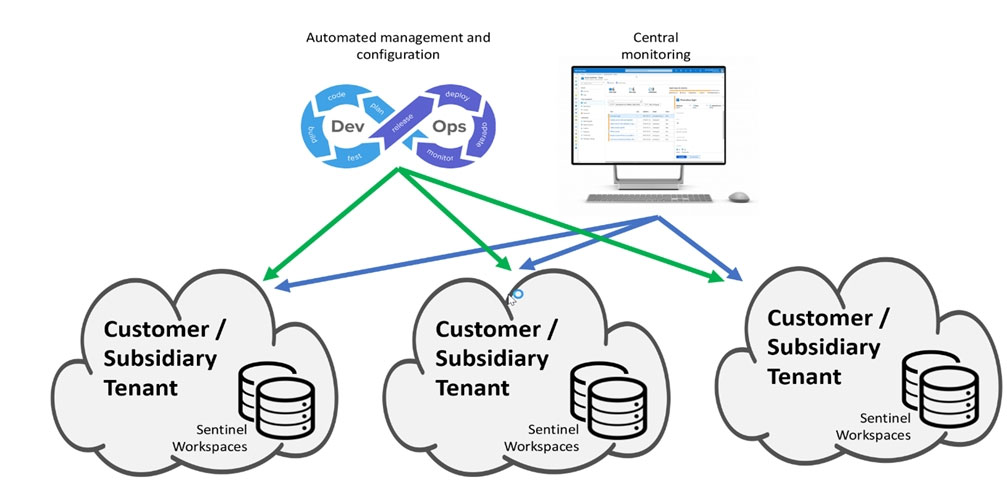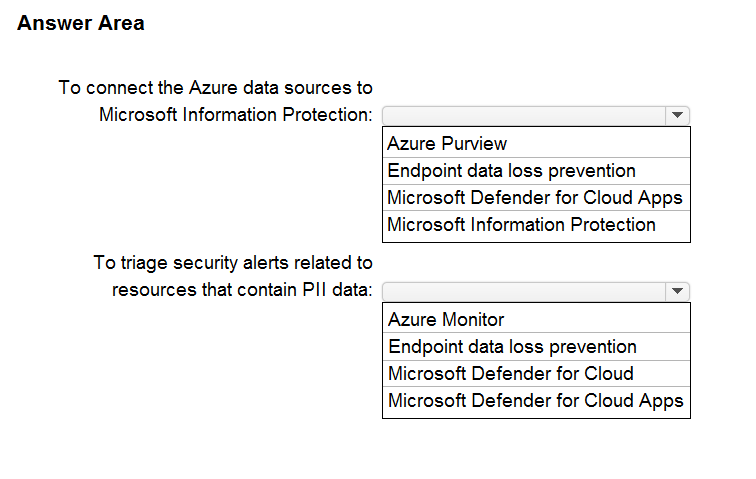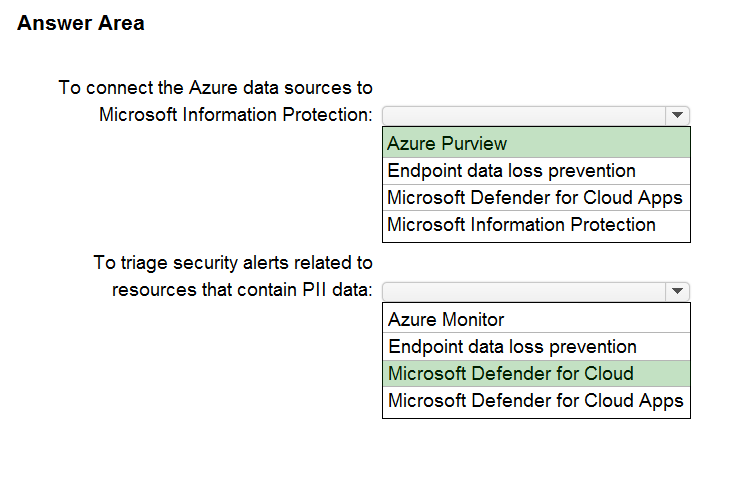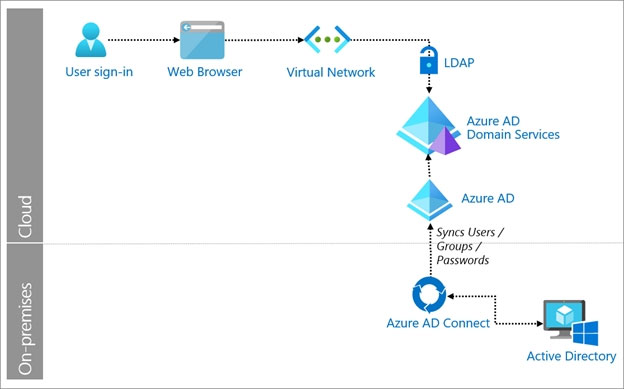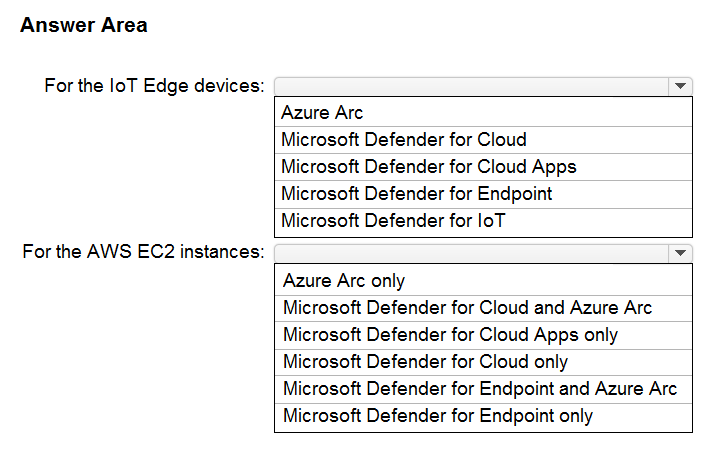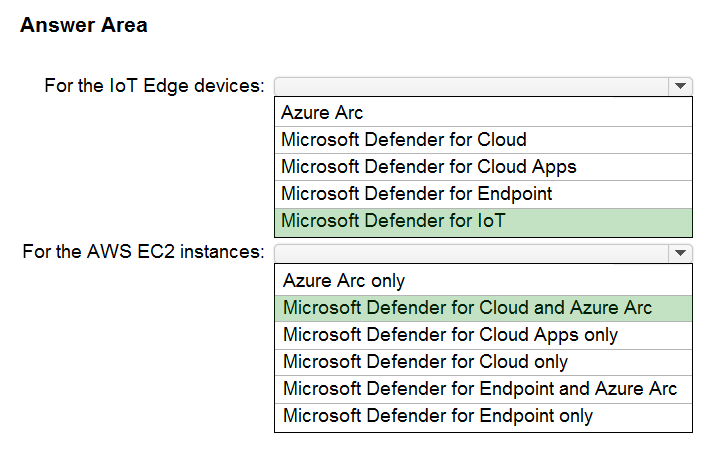SC-100 Practice Questions Free – 50 Exam-Style Questions to Sharpen Your Skills
Are you preparing for the SC-100 certification exam? Kickstart your success with our SC-100 Practice Questions Free – a carefully selected set of 50 real exam-style questions to help you test your knowledge and identify areas for improvement.
Practicing with SC-100 practice questions free gives you a powerful edge by allowing you to:
- Understand the exam structure and question formats
- Discover your strong and weak areas
- Build the confidence you need for test day success
Below, you will find 50 free SC-100 practice questions designed to match the real exam in both difficulty and topic coverage. They’re ideal for self-assessment or final review. You can click on each Question to explore the details.
You are evaluating an Azure environment for compliance. You need to design an Azure Policy implementation that can be used to evaluate compliance without changing any resources. Which effect should you use in Azure Policy?
A. Deny
B. Modify
C. Append
D. Disabled
You need to recommend a solution for securing the landing zones. The solution must meet the landing zone requirements and the business requirements. What should you configure for each landing zone?
A. an ExpressRoute gateway
B. Microsoft Defender for Cloud
C. an Azure Private DNS zone
D. Azure DDoS Protection Standard
After you answer a question in this section, you will NOT be able to return to it. As a result, these questions will not appear in the review screen. You are designing the encryption standards for data at rest for an Azure resource. You need to provide recommendations to ensure that the data at rest is encrypted by using AES-256 keys. The solution must support rotating the encryption keys monthly. Solution: For Azure SQL databases, you recommend Transparent Data Encryption (TDE) that uses customer-managed keys (CMKs). Does this meet the goal?
A. Yes
B. No
HOTSPOT - Your company has an Azure App Service plan that is used to deploy containerized web apps. You are designing a secure DevOps strategy for deploying the web apps to the App Service plan. You need to recommend a strategy to integrate code scanning tools into a secure software development lifecycle. The code must be scanned during the following two phases: ✑ Uploading the code to repositories ✑ Building containers Where should you integrate code scanning for each phase? To answer, select the appropriate options in the answer area. NOTE: Each correct selection is worth one point. Hot Area:
Your company has a Microsoft 365 E5 subscription. The company plans to deploy 45 mobile self-service kiosks that will run Windows 10. You need to provide recommendations to secure the kiosks. The solution must meet the following requirements: ✑ Ensure that only authorized applications can run on the kiosks. ✑ Regularly harden the kiosks against new threats. Which two actions should you include in the recommendations? Each correct answer presents part of the solution. NOTE: Each correct selection is worth one point.
A. Implement Automated investigation and Remediation (AIR) in Microsoft Defender for Endpoint.
B. Onboard the kiosks to Microsoft intune and Microsoft Defender for Endpoint.
C. Implement threat and vulnerability management in Microsoft Defender for Endpoint.
D. Onboard the kiosks to Azure Monitor.
E. Implement Privileged Access Workstation (PAW) for the kiosks.
You are designing a ransomware response plan that follows Microsoft Security Best Practices. You need to recommend a solution to minimize the risk of a ransomware attack encrypting local user files. What should you include in the recommendation?
A. Windows Defender Device Guard
B. Microsoft Defender for Endpoint
C. Azure Files
D. BitLocker Drive Encryption (BitLocker)
E. protected folders
HOTSPOT - For a Microsoft cloud environment, you are designing a security architecture based on the Microsoft Cybersecurity Reference Architectures (MCRA). You need to protect against the following external threats of an attack chain: • An attacker attempts to exfiltrate data to external websites. • An attacker attempts lateral movement across domain-joined computers. What should you include in the recommendation for each threat? To answer, select the appropriate options in the answer area. NOTE: Each correct selection is worth one point.
HOTSPOT - You have a Microsoft 365 E5 subscription and an Azure subscription. You need to evaluate the existing environment to increase the overall security posture for the following components: ✑ Windows 11 devices managed by Microsoft Intune ✑ Azure Storage accounts ✑ Azure virtual machines What should you use to evaluate the components? To answer, select the appropriate options in the answer area. NOTE: Each correct selection is worth one point. Hot Area:
Your company has on-premises Microsoft SQL Server databases. The company plans to move the databases to Azure. You need to recommend a secure architecture for the databases that will minimize operational requirements for patching and protect sensitive data by using dynamic data masking. The solution must minimize costs. What should you include in the recommendation?
A. Azure SQL Managed Instance
B. Azure Synapse Analytics dedicated SQL pools
C. Azure SQL Database
D. SQL Server on Azure Virtual Machines
You have a Microsoft 365 subscription and an Azure subscription. Microsoft 365 Defender and Microsoft Defender for Cloud are enabled. The Azure subscription contains 50 virtual machines. Each virtual machine runs different applications on Windows Server 2019. You need to recommend a solution to ensure that only authorized applications can run on the virtual machines. If an unauthorized application attempts to run or be installed, the application must be blocked automatically until an administrator authorizes the application. Which security control should you recommend?
A. app discovery anomaly detection policies in Microsoft Defender for Cloud Apps
B. Azure AD Conditional Access App Control policies
C. adaptive application controls in Defender for Cloud
D. app protection policies in Microsoft Endpoint Manager
HOTSPOT - You have a Microsoft 365 subscription that is protected by using Microsoft 365 Defender. You are designing a security operations strategy that will use Microsoft Sentinel to monitor events from Microsoft 365 and Microsoft 365 Defender. You need to recommend a solution to meet the following requirements: • Integrate Microsoft Sentinel with a third-party security vendor to access information about known malware. • Automatically generate incidents when the IP address of a command-and-control server is detected in the events. What should you configure in Microsoft Sentinel to meet each requirement? To answer, select the appropriate options in the answer area. NOTE: Each correct selection is worth one point.
Your company has an Azure subscription that uses Microsoft Defender for Cloud. The company signs a contract with the United States government. You need to review the current subscription for NIST 800-53 compliance. What should you do first?
A. From Defender for Cloud, enable Defender for Cloud plans.
B. From Defender for Cloud, review the Azure security baseline for audit report.
C. From Defender for Cloud, add a regulatory compliance standard.
D. From Microsoft Defender for Cloud Apps, create an access policy for cloud applications.
Your company plans to move all on-premises virtual machines to Azure. A network engineer proposes the Azure virtual network design shown in the following table.You need to recommend an Azure Bastion deployment to provide secure remote access to all the virtual machines. Based on the virtual network design, how many Azure Bastion subnets are required?
A. 1
B. 2
C. 3
D. 4
E. 5
You are planning the security requirements for Azure Cosmos DB Core (SQL) API accounts. You need to recommend a solution to audit all users that access the data in the Azure Cosmos DB accounts. Which two configurations should you include in the recommendation? Each correct answer presents part of the solution. NOTE: Each correct selection is worth one point.
A. Send the Azure Active Directory (Azure AD) sign-in logs to a Log Analytics workspace.
B. Enable Microsoft Defender for Identity.
C. Send the Azure Cosmos DB logs to a Log Analytics workspace.
D. Disable local authentication for Azure Cosmos DB.
E. Enable Microsoft Defender for Cosmos DB.
HOTSPOT - You are designing a privileged access strategy for a company named Contoso, Ltd. and its partner company named Fabrikam, Inc. Contoso has an Azure AD tenant named contoso.com. Fabrikam has an Azure AD tenant named fabrikam.com. Users at Fabrikam must access the resources in contoso.com. You need to provide the Fabrikam users with access to the Contoso resources by using access packages. The solution must meet the following requirements: • Ensure that the Fabrikam users can use the Contoso access packages without explicitly creating guest accounts in contoso.com. • Allow non-administrative users in contoso.com to create the access packages. What should you use for each requirement? To answer, select the appropriate options in the answer area. NOTE: Each correct selection is worth one point.
You have an Azure subscription that has Microsoft Defender for Cloud enabled. You have an Amazon Web Services (AWS) implementation. You plan to extend the Azure security strategy to the AWS implementation. The solution will NOT use Azure Arc. Which three services can you use to provide security for the AWS resources? Each correct answer presents a complete solution. NOTE: Each correct selection is worth one point.
A. Microsoft Defender for Containers
B. Microsoft Defender for servers
C. Azure Active Directory (Azure AD) Conditional Access
D. Azure Active Directory (Azure AD) Privileged Identity Management (PIM)
E. Azure Policy
After you answer a question in this section, you will NOT be able to return to it. As a result, these questions will not appear in the review screen. You are designing a security strategy for providing access to Azure App Service web apps through an Azure Front Door instance. You need to recommend a solution to ensure that the web apps only allow access through the Front Door instance. Solution: You recommend access restrictions that allow traffic from the Front Door service tags. Does this meet the goal?
A. Yes
B. No
Your company has a Microsoft 365 E5 subscription. The company wants to identify and classify data in Microsoft Teams, SharePoint Online, and Exchange Online. You need to recommend a solution to identify documents that contain sensitive information. What should you include in the recommendation?
A. data classification content explorer
B. data loss prevention (DLP)
C. eDiscovery
D. Information Governance
You are designing a new Azure environment based on the security best practices of the Microsoft Cloud Adoption Framework for Azure. The environment will contain one subscription for shared infrastructure components and three separate subscriptions for applications. You need to recommend a deployment solution that includes network security groups (NSGs), Azure Firewall, Azure Key Vault, and Azure Bastion. The solution must minimize deployment effort and follow security best practices of the Microsoft Cloud Adoption Framework for Azure. What should you include in the recommendation?
A. the Azure landing zone accelerator
B. the Azure Well-Architected Framework
C. Azure Security Benchmark v3
D. Azure Advisor
You need to recommend a solution to resolve the virtual machine issue. What should you include in the recommendation?
A. Enable the Qualys scanner in Defender for Cloud.
B. Onboard the virtual machines to Microsoft Defender for Endpoint.
C. Create a device compliance policy in Microsoft Endpoint Manager.
D. Onboard the virtual machines to Azure Arc.
Your company uses Azure Pipelines and Azure Repos to implement continuous integration and continuous deployment (CI/CD) workflows for the deployment of applications to Azure. You are updating the deployment process to align with DevSecOps controls guidance in the Microsoft Cloud Adoption Framework for Azure. You need to recommend a solution to ensure that all code changes are submitted by using pull requests before being deployed by the CI/CD workflow. What should you include in the recommendation?
A. custom roles in Azure Pipelines
B. branch policies in Azure Repos
C. Azure policies
D. custom Azure roles
You have an Azure AD tenant that syncs with an Active Directory Domain Services (AD DS) domain. Client computers run Windows and are hybrid-joined to Azure AD. You are designing a strategy to protect endpoints against ransomware. The strategy follows Microsoft Security Best Practices. You plan to remove all the domain accounts from the Administrators groups on the Windows computers. You need to recommend a solution that will provide users with administrative access to the Windows computers only when access is required. The solution must minimize the lateral movement of ransomware attacks if an administrator account on a computer is compromised. What should you include in the recommendation?
A. Local Administrator Password Solution (LAPS)
B. Azure AD Identity Protection
C. Azure AD Privileged Identity Management (PIM)
D. Privileged Access Workstations (PAWs)
Your company plans to deploy several Azure App Service web apps. The web apps will be deployed to the West Europe Azure region. The web apps will be accessed only by customers in Europe and the United States. You need to recommend a solution to prevent malicious bots from scanning the web apps for vulnerabilities. The solution must minimize the attack surface. What should you include in the recommendation?
A. Azure Firewall Premium
B. Azure Traffic Manager and application security groups
C. Azure Application Gateway Web Application Firewall (WAF)
D. network security groups (NSGs)
DRAG DROP - You have a Microsoft 365 subscription. You need to recommend a security solution to monitor the following activities: • User accounts that were potentially compromised • Users performing bulk file downloads from Microsoft SharePoint Online What should you include in the recommendation for each activity? To answer, drag the appropriate components to the correct activities. Each component may be used once, more than once, or not at all. You may need to drag the split bar between panes or scroll to view content. NOTE: Each correct selection is worth one point.
HOTSPOT - You have an Azure subscription and an on-premises datacenter. The datacenter contains 100 servers that run Windows Server. All the servers are backed up to a Recovery Services vault by using Azure Backup and the Microsoft Azure Recovery Services (MARS) agent. You need to design a recovery solution for ransomware attacks that encrypt the on-premises servers. The solution must follow Microsoft Security Best Practices and protect against the following risks: • A compromised administrator account used to delete the backups from Azure Backup before encrypting the servers • A compromised administrator account used to disable the backups on the MARS agent before encrypting the servers What should you use for each risk? To answer, select the appropriate options in the answer area. NOTE: Each correct selection is worth one point.
HOTSPOT - You are designing the security architecture for a cloud-only environment. You are reviewing the integration point between Microsoft 365 Defender and other Microsoft cloud services based on Microsoft Cybersecurity Reference Architectures (MCRA). You need to recommend which Microsoft cloud services integrate directly with Microsoft 365 Defender and meet the following requirements: • Enforce data loss prevention (DLP) policies that can be managed directly from the Microsoft 365 Defender portal. • Detect and respond to security threats based on User and Entity Behavior Analytics (UEBA) with unified alerting. What should you include in the recommendation for each requirement? To answer, select the appropriate options in the answer area. NOTE: Each correct selection is worth one point.
You are designing security for an Azure landing zone. Your company identifies the following compliance and privacy requirements: ✑ Encrypt cardholder data by using encryption keys managed by the company. ✑ Encrypt insurance claim files by using encryption keys hosted on-premises. Which two configurations meet the compliance and privacy requirements? Each correct answer presents part of the solution. NOTE: Each correct selection is worth one point.
A. Store the cardholder data in an Azure SQL database that is encrypted by using Microsoft-managed keys.
B. Store the insurance claim data in Azure Blob storage encrypted by using customer-provided keys.
C. Store the cardholder data in an Azure SQL database that is encrypted by using keys stored in Azure Key Vault Managed HSM.
D. Store the insurance claim data in Azure Files encrypted by using Azure Key Vault Managed HSM.
Your company plans to follow DevSecOps best practices of the Microsoft Cloud Adoption Framework for Azure. You need to perform threat modeling by using a top-down approach based on the Microsoft Cloud Adoption Framework for Azure. What should you use to start the threat modeling process?
A. the STRIDE model
B. the DREAD model
C. OWASP threat modeling
You have an on-premises network and a Microsoft 365 subscription. You are designing a Zero Trust security strategy. Which two security controls should you include as part of the Zero Trust solution? Each correct answer presents part of the solution. NOTE: Each correct answer is worth one point.
A. Always allow connections from the on-premises network.
B. Disable passwordless sign-in for sensitive accounts.
C. Block sign-in attempts from unknown locations.
D. Block sign-in attempts from noncompliant devices.
You have an Azure subscription. Your company has a governance requirement that resources must be created in the West Europe or North Europe Azure regions. What should you recommend using to enforce the governance requirement?
A. Azure management groups
B. custom Azure roles
C. Azure Policy assignments
D. regulatory compliance standards in Microsoft Defender for Cloud
HOTSPOT - You are designing security for a runbook in an Azure Automation account. The runbook will copy data to Azure Data Lake Storage Gen2. You need to recommend a solution to secure the components of the copy process. What should you include in the recommendation for each component? To answer, select the appropriate options in the answer area. NOTE: Each correct selection is worth one point. Hot Area:
You use Azure Pipelines with Azure Repos to implement continuous integration and continuous deployment (CI/CD) workflows for the deployment of applications to Azure. You need to recommend what to include in dynamic application security testing (DAST) based on the principles of the Microsoft Cloud Adoption Framework for Azure. What should you recommend?
A. unit testing
B. penetration testing
C. dependency checks
D. threat modeling
HOTSPOT - You are creating the security recommendations for an Azure App Service web app named App1. App1 has the following specifications: ✑ Users will request access to App1 through the My Apps portal. A human resources manager will approve the requests. ✑ Users will authenticate by using Azure Active Directory (Azure AD) user accounts. You need to recommend an access security architecture for App1. What should you include in the recommendation? To answer, select the appropriate options in the answer area. NOTE: Each correct selection is worth one point. Hot Area:
HOTSPOT - You open Microsoft Defender for Cloud as shown in the following exhibit.Use the drop-down menus to select the answer choice that completes each statement based on the information presented in the graphic. NOTE: Each correct selection is worth one point. Hot Area:
HOTSPOT - You need to recommend a SIEM and SOAR strategy that meets the hybrid requirements, the Microsoft Sentinel requirements, and the regulatory compliance requirements. What should you recommend? To answer, select the appropriate options in the answer area. NOTE: Each correct selection is worth one point. Hot Area:
Your company has on-premises network in Seattle and an Azure subscription. The on-premises network contains a Remote Desktop server. The company contracts a third-party development firm from France to develop and deploy resources to the virtual machines hosted in the Azure subscription. Currently, the firm establishes an RDP connection to the Remote Desktop server. From the Remote Desktop connection, the firm can access the virtual machines hosted in Azure by using custom administrative tools installed on the Remote Desktop server. All the traffic to the Remote Desktop server is captured by a firewall, and the firewall only allows specific connections from France to the server. You need to recommend a modern security solution based on the Zero Trust model. The solution must minimize latency for developers. Which three actions should you recommend? Each correct answer presents part of the solution. NOTE: Each correct selection is worth one point.
A. Configure network security groups (NSGs) to allow access from only specific logical groupings of IP address ranges.
B. Deploy a Remote Desktop server to an Azure region located in France.
C. Migrate from the Remote Desktop server to Azure Virtual Desktop.
D. Implement Azure Firewall to restrict host pool outbound access.
E. Configure Azure Active Directory (Azure AD) Conditional Access with multi-factor authentication (MFA) and named locations.
Your company develops several applications that are accessed as custom enterprise applications in Azure Active Directory (Azure AD). You need to recommend a solution to prevent users on a specific list of countries from connecting to the applications. What should you include in the recommendation?
A. activity policies in Microsoft Defender for Cloud Apps
B. sign-in risk policies in Azure AD Identity Protection
C. Azure AD Conditional Access policies
D. device compliance policies in Microsoft Endpoint Manager
E. user risk poticies in Azure AD Identity Protection
Your company has the virtual machine infrastructure shown in the following table.The company plans to use Microsoft Azure Backup Server (MABS) to back up the virtual machines to Azure. You need to provide recommendations to increase the resiliency of the backup strategy to mitigate attacks such as ransomware. What should you include in the recommendation?
A. Use geo-redundant storage (GRS).
B. Maintain multiple copies of the virtual machines.
C. Encrypt the backups by using customer-managed keys (CMKS).
D. Require PINs to disable backups.
Your company is developing an invoicing application that will use Azure Active Directory (Azure AD) B2C. The application will be deployed as an App Service web app. You need to recommend a solution to the application development team to secure the application from identity-related attacks. Which two configurations should you recommend? Each correct answer presents part of the solution. NOTE: Each correct selection is worth one point.
A. Azure AD workbooks to monitor risk detections
B. Azure AD Conditional Access integration with user flows and custom policies
C. smart account lockout in Azure AD B2C
D. access packages in Identity Governance
E. custom resource owner password credentials (ROPC) flows in Azure AD B2C
Your company is developing a modern application that will un as an Azure App Service web app. You plan to perform threat modeling to identity potential security issues by using the Microsoft Threat Modeling Tool. Which type of diagram should you create?
A. system flow
B. data flow
C. process flow
D. network flow
You have an Azure AD tenant that syncs with an Active Directory Domain Services (AD DS) domain. You are designing an Azure DevOps solution to deploy applications to an Azure subscription by using continuous integration and continuous deployment (CI/CD) pipelines. You need to recommend which types of identities to use for the deployment credentials of the service connection. The solution must follow DevSecOps best practices from the Microsoft Cloud Adoption Framework for Azure. What should you recommend?
A. a managed identity in Azure
B. an Azure AD user account that has role assignments in Azure AD Privileged Identity Management (PIM)
C. a group managed service account (gMSA)
D. an Azure AD user account that has a password stored in Azure Key Vault
You need to design a strategy for securing the SharePoint Online and Exchange Online data. The solution must meet the application security requirements. Which two services should you leverage in the strategy? Each correct answer presents part of the solution. NOTE: Each correct selection is worth one point.
A. Azure AD Conditional Access
B. access reviews in Azure AD
C. Microsoft Defender for Cloud
D. Microsoft Defender for Cloud Apps
E. Microsoft Defender for Endpoint
HOTSPOT - Your company is migrating data to Azure. The data contains Personally Identifiable Information (PII). The company plans to use Microsoft Information Protection for the PII data store in Azure. You need to recommend a solution to discover PII data at risk in the Azure resources. What should you include in the recommendation? To answer, select the appropriate options in the answer area. NOTE: Each correct selection is worth one point. Hot Area:
DRAG DROP - Your company wants to optimize ransomware incident investigations. You need to recommend a plan to investigate ransomware incidents based on the Microsoft Detection and Response Team (DART) approach. Which three actions should you recommend performing in sequence in the plan? To answer, move the appropriate actions from the list of actions to the answer area and arrange them in the correct order.
You have a Microsoft 365 subscription. You need to design a solution to block file downloads from Microsoft SharePoint Online by authenticated users on unmanaged devices. Which two services should you include in the solution? Each correct answer presents part of the solution. NOTE: Each correct selection is worth one point.
A. Azure AD Conditional Access
B. Azure Data Catalog
C. Microsoft Purview Information Protection
D. Azure AD Application Proxy
E. Microsoft Defender for Cloud Apps
You have an Azure subscription that contains virtual machines. Port 3389 and port 22 are disabled for outside access. You need to design a solution to provide administrators with secure remote access to the virtual machines. The solution must meet the following requirements: ✑ Prevent the need to enable ports 3389 and 22 from the internet. ✑ Only provide permission to connect the virtual machines when required. ✑ Ensure that administrators use the Azure portal to connect to the virtual machines. Which two actions should you include in the solution? Each correct answer presents part of the solution. NOTE: Each correct selection is worth one point.
A. Configure Azure VPN Gateway.
B. Enable Just Enough Administration (JEA).
C. Configure Azure Bastion.
D. Enable just-in-time (JIT) VM access.
E. Enable Azure Active Directory (Azure AD) Privileged Identity Management (PIM) roles as virtual machine contributors.
After you answer a question in this section, you will NOT be able to return to it. As a result, these questions will not appear in the review screen. Your on-premises network contains an e-commerce web app that was developed in Angular and Node,js. The web app uses a MongoDB database. You plan to migrate the web app to Azure. The solution architecture team proposes the following architecture as an Azure landing zone.You need to provide recommendations to secure the connection between the web app and the database. The solution must follow the Zero Trust model. Solution: You recommend implementing Azure Application Gateway with Azure Web Application Firewall (WAF). Does this meet the goal?
A. Yes
B. No
You have an on-premises network that has several legacy applications. The applications perform LDAP queries against an existing directory service. You are migrating the on-premises infrastructure to a cloud-only infrastructure. You need to recommend an identity solution for the infrastructure that supports the legacy applications. The solution must minimize the administrative effort to maintain the infrastructure. Which identity service should you include in the recommendation?
A. Azure Active Directory (Azure AD) B2C
B. Azure Active Directory Domain Services (Azure AD DS)
C. Azure Active Directory (Azure AD)
D. Active Directory Domain Services (AD DS)
HOTSPOT - Your company has a multi-cloud environment that contains a Microsoft 365 subscription, an Azure subscription, and Amazon Web Services (AWS) implementation. You need to recommend a security posture management solution for the following components: ✑ Azure IoT Edge devices AWS EC2 instances -Which services should you include in the recommendation? To answer, select the appropriate options in the answer area. NOTE: Each correct selection is worth one point. Hot Area:
Your company plans to evaluate the security of its Azure environment based on the principles of the Microsoft Cloud Adoption Framework for Azure. You need to recommend a cloud-based service to evaluate whether the Azure resources comply with the National Institute of Standards and Technology (NIST) Cybersecurity Framework (CSF). What should you recommend?
A. Compliance Manager in Microsoft Purview
B. Microsoft Defender for Cloud
C. Microsoft Sentinel
D. Microsoft Defender for Cloud Apps
Free Access Full SC-100 Practice Questions Free
Want more hands-on practice? Click here to access the full bank of SC-100 practice questions free and reinforce your understanding of all exam objectives.
We update our question sets regularly, so check back often for new and relevant content.
Good luck with your SC-100 certification journey!


